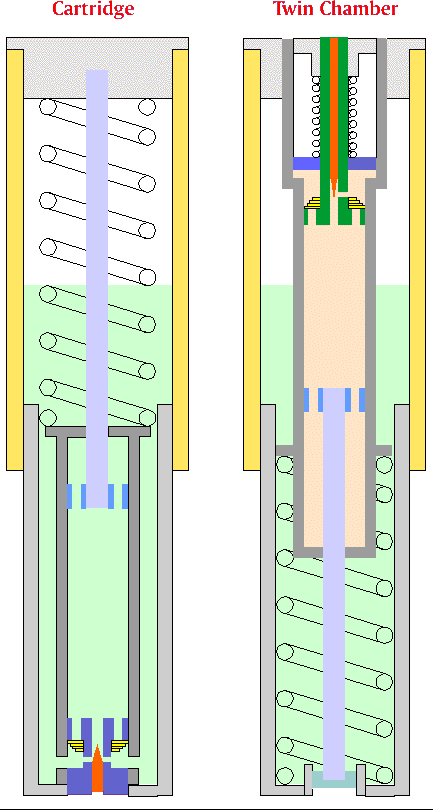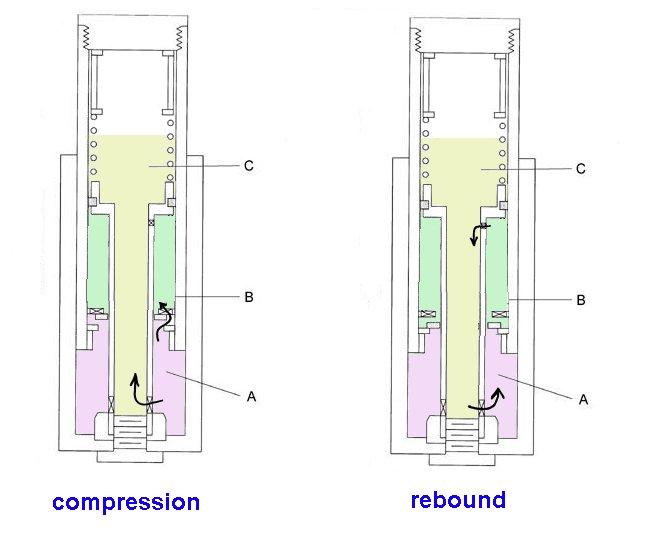
|
| |
|
|

| |

|
Bei der Twin-Chamber Gabel befindet sich innen ein eigener Dämpfer, dessen Ölkreislauf vom äusseren getrennt ist.
Der äussere Ölkreislauf dient nur zur Schmierung und zur Progression (Ölstand). Was beim Stoßdämpfer der Ausgleichsbehälter mit Stickstoffblase macht, ist hier mit einem Ausgleichskolben und Feder gelöst. Wenn die Kolbenstange eintaucht, wird das von der Kolbenstange verdrängte Öl durch die Druckstufenshims gepresst und drückt den Ausgleichskolben nach aussen. Die Zugstufenshims (nicht eingezeichnet) sitzen auf dem Dämpferkolben. | on twin-chamber forks there is a closed cartridge inside so there are two seperate oil systems.
the outer oil is just for lubrication and progression (oil volume)
on shocks there is a reservoir filled with nitrogene gas to absorb the
volume of the piston rod - on t.c. forks this is accomplished with a piston and a spring.
| Bei normalen Cartridge Gabeln ist die Druckstufe unten, bei Twin-Chamber Gabeln oben!
|
on cartridge forks rebound is on top, on twin-chamber forks compression is on top!
| |
Gabeln mit Dämpferstangen | damper rod forks |

|
Beim Einfedern strömt das vom Standrohr verdrängte Öl von A durch das offene _ Rückschlagventil nach B und durch die unteren Bohrungen in der Dämpferstange nach C. Beim Ausfedern wird das Rückschlagventil von B nach A geschlossen und das Öl muss durch die kleine Bohrung oben an der Dämpferstange zurück nach A fliessen |
at the compression stroke the oil displaced by the inner fork tube goes through the compression orifices at the bottom of the damper rod (A to C) and through the open check valve from A to B. At the rebound stroke the check valve is closed and the oil has to go through the small orifices at the top of the damping rod. |